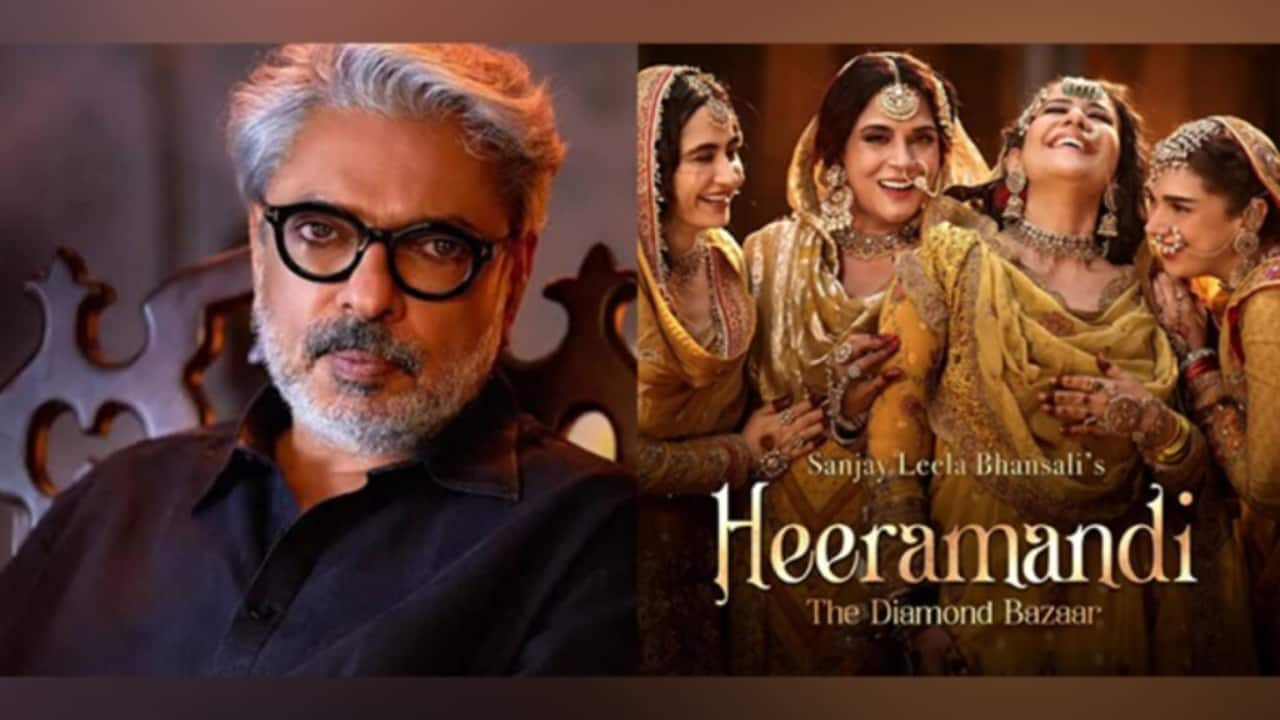



Is Sanjay Leela Bhansali glorifying the tawaif culture in Heeramandi? The same culture where women are sold off as young girls to brothels and spend their entire lives dreaming of freedom? Here’s a look at Tawaif-core and the history of tawaif culture in pre-Independence India.

An India-born, Oxford-educated, English-speaking son of a rich nawab Tajdar Baloch (Taha Shah Badussha) returns to Lahore. To his utter dismay, he is asked by his grandmother Qudsia Begum (Farida Jalal) to visit Heeramandi, the now infamous red-light district in Pakistan where kothas once flourished under the patronage of feudal lords. “Waha auraton ki izzat ki keemat lagayi jaati hai (A woman’s dignity is for sale there)" says Tajdar, who associates Tawaif culture with debauchery.
Rajdar is not very different from the men on social media today who aren’t too pleased with women experimenting with Tawaif-core—an Instagram trend where stylists, make-up artists and Instagram influencers dress up as tawaifs inspired by Sanjay Leela Bhansali’s Netflix show Heeramandi. The many factual inaccuracies in the series—from tawaifs wearing Sabyasachi lehengas, to opulence which isn’t typical of the time the story is set in—earned the show a fair bit of criticism.
Is Bhansali glorifying tawaif culture in the show? The same culture where women are sold off as children to brothels and spend a life dreaming of freedom? Should tawaif culture be glorified given that the courtesans were often subjected to sexual abuse by rich nawabs? More importantly—if one cosplays as a tawaif, does that mean that they are condoning the culture that was built on the exploitation of women?
None of these questions can be answered unless one looks at the history of tawaif culture, pre-British Raj. The word tawaif is often used interchangeably with prostitute, or, at the very least, is meant to have the same connotation. Historically, this couldn’t be further from the truth. Tawaifs were once the connoisseurs of art and poetry. The kothas, which are now considered a haven of debauchery, once reverberated with the sound of ghazals, poetry and mujra.

Originally, during the Mughal era, Tawaifs were entertainers who earned a living via the patronage of rich nawabs and Kings. Their work was primarily performing mujra and reciting ghazals—the sex was incidental. Post the colonization of India when the British imposed their outdated 19th Century Victorian morals on women, tawaifs were looked down upon. Over a period of time, their status in the society went from being connoisseurs of art to sex workers. Once an artform, mujra is now associated with vulgarity and debauchery.
The white male gaze of the colonizers the red light areas and kothas into, in the words of Rajdar, places where “woman’s dignity is for sale”. Most tawaifs, prior to the arrival of the British, lived as queens and accumulated a fair amount of wealth too.
Still, the life of a tawaif was far from being aspirational. In Heeramandi, the two daughters of Mallikajaan (Manisha Koirala)—Lajjo (Richa Chadha) and Bibbojaan (Aditi Rao Hydari) were forced to be tawaifs by their mother. Neither of the two women were given a choice to live a different life, one where they don’t feel like birds trapped in a golden cage. The women dream of a marriage with nawabs that will be the key to their cage. As Lajjo obsesses over Zoravar (Adhyayan Suman), she seeks refuge in alcohol and has a tragic end.
Bibbojaan, having pinned all her hopes on her patron-cum-lover Wali Mohammed (Fardeen Khan) is devastated when he leaves her for Fareedan (Sonakshi Sinha). While tawaifs led a difficult life (and definitely didn’t wear Sabyasachi lehengas), the culture itself represented refinement and sophistication to the point that the Kings would send their young sons to kothas to learn adab (etiquette) and kaayda (manners).
Post the arrival of the British, kothas served as places where rebellion against the colonizers took shape. Bibbo, having lost her purpose, donates her jewelry for the cause and becomes a covert freedom fighter. Some might read Tawaif-core, the Instagram trend of dressing up as tawaifs as an endorsement of a problematic culture. But if it wasn’t for the colonizers, tawaifs wouldn’t be viewed with such disgust in the first place.
The videos of young women dressing up as Heeramandi characters can perhaps be read as a tribute to the free-spirited tawaifs who lived difficult lives but treated themselves like queens nonetheless. They taught children of kings, fought against the British and contributed to the arts. If anything, Tawaif-core is the perfect way to keep the spirit of the pre-colonial tawaif culture alive.
Discover the latest Business News, Sensex, and Nifty updates. Obtain Personal Finance insights, tax queries, and expert opinions on Moneycontrol or download the Moneycontrol App to stay updated!
Find the best of Al News in one place, specially curated for you every weekend.
Stay on top of the latest tech trends and biggest startup news.